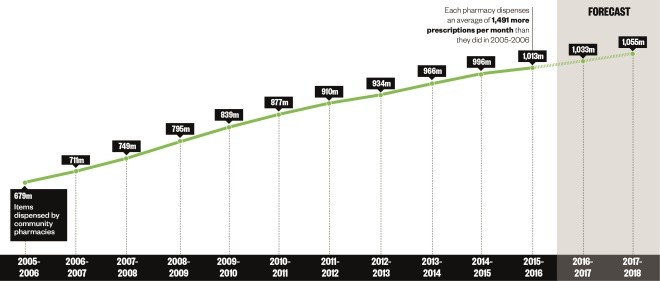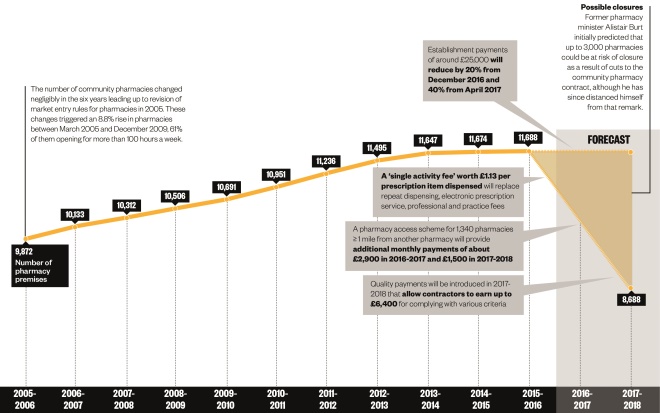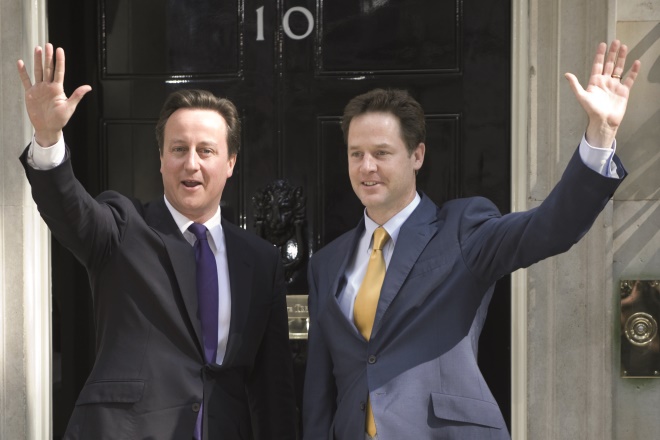Download the full infographic here

Figure 1: Contract funding to be cut
Total funding for the community pharmacy contract has gradually risen over the past decade but is being cut in 2016-2017 as part of an overhaul of pharmacy funding announced by the government.

Figure 2: Workload continues to increase
The number of prescription items dispensed by community pharmacies in England each year has risen by 334 million over the past decade.

Figure 3: Pharmacy market dynamics and the funding changes
The number of pharmacies in England has been increasing since market entry exemptions were introduced in 2005, although this has slowed since the exemptions were removed in 2012. It is unclear whether cuts to funding of the community pharmacy contract will lead to pharmacy closures.
Evolution of the contract
Since a new community pharmacy contract was introduced in 2005, there has been a number of changes in government as well as a huge reorganisation of the NHS. During this time, several new services have been included within the pharmacy contract and changes to market entry regulations have been made.
April 2005: A new community pharmacy contract is introduced in England and Wales, which, for the first time, rewards provision of services as well as dispensing volume. The contract introduces essential, advanced (including medicines use reviews) and locally commissioned enhanced services.

Source: Wikimedia Commons
Patricia Hewitt (Labour), secretary of state for health from May 2005 to June 2007
April 2005: Exemptions to the “necessary and desirable” test for market entry are introduced, including pharmacies in large out-of-town retail developments or one-stop primary care centres, 100-hour pharmacies and mail order or internet pharmacies.

Source: Rex/Shutterstock
May 2010: The general election results in a hung parliament and the Conservatives and Liberal Democrats form a coalition.

Source: Shutterstock.com
October 2011: The new medicine service is added to the community pharmacy contract as an advanced service.

Source: Alamy Stock Photo
September 2012: Regulations implement market entry tests based on pharmaceutical needs assessments published by primary care trusts and remove existing exemptions to the market entry test.

Source: Shutterstock.com
April 2013: A reorganisation of the NHS sees NHS England take over responsibility for community pharmacy funding from the Department of Health and local authorities gain control of public health budgets.
May 2015: The Conservatives win a majority; 6.2% cuts to public health budgets are announced a month later. In September, a seasonal influenza vaccination service is included as an advanced service in the pharmacy contract.

Source: Shutterstock.com
October 2016: An overhaul of community pharmacy funding is announced by the government, including cutting the total budget by 4.0% for 2016–2017 and a further 3.4% for 2017–2018, scrapping establishment payments and introducing a new quality payment scheme.
References
Sources: NHS Digital and PSNC


